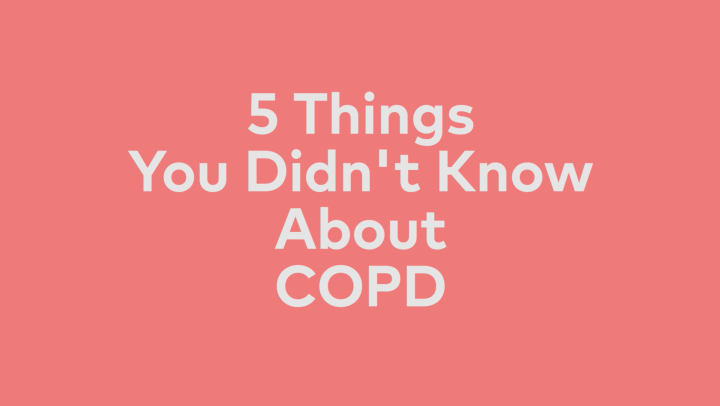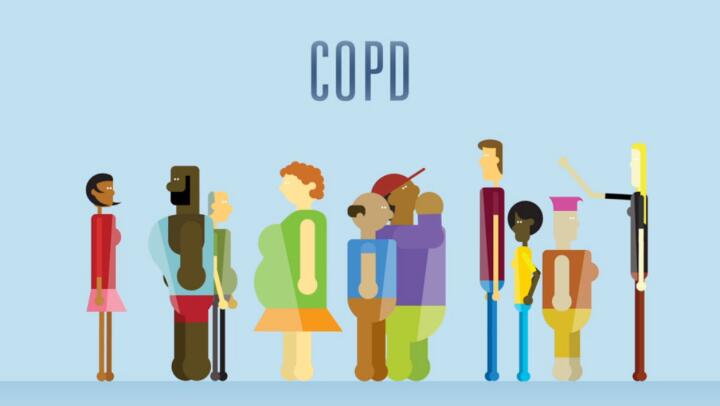
My patients frequently ask me if there are any new treatment options for COPD. Unfortunately, the development of new COPD treatments has not kept pace with an increasing worldwide disease burden of COPD; for many years, there were few alternatives to traditional treatments. However, recently, new treatments have become available, and doctors are also looking at newer uses for older treatments to treat those with COPD.
Traditional COPD treatment often consists of some combination of the following:
- Short-acting bronchodilators (e.g. albuterol)
- Short-acting anticholinergics (e.g. ipratropium)
- Long-acting bronchodilators (e.g. salmeterol, formoterol, olodaterol)
- Inhaled steroids (e.g. beclomethasone, budesonide, fluticasone)
- Long-acting inhaled anticholinergic (e.g. tiotropium)
Many of these drugs are used together and are now often combined into a single inhaler. In addition to traditional and newer medications, quitting smoking, optimizing nutrition, and getting appropriate immunizations are other treatments that may improve your overall COPD health.
1. Azithromycin: An old drug with a new use.
You may have taken this drug during a COPD exacerbation where you had increased cough, mucus production, shortness of breath, or wheezing. More recently, azithromycin demonstrated additional benefits beyond killing the bacteria responsible for exacerbations, especially for those who have frequent exacerbations despite optimal medical therapy. Azithromycin has anti-inflammatory properties and taking it as a preventative treatment may improve quality of life, decrease symptoms, and decrease COPD exacerbations. While not common, some patients experienced hearing problems with preventative treatment and there is a potential concern for increased antibiotic resistance.
2. Roflumilast: A new class of drugs.
Roflumilast is a phosphodiesterase-4 (PDE4) inhibitor and a new class of COPD treatment that functions as an anti-inflammatory agent. In clinical trials, it has improved lung function and decreased COPD exacerbations. Roflumilast was combined with traditional COPD treatments in some studies and patients did not experience increased episodes of pneumonia that clinical trials using inhaled steroids have demonstrated in the past. Patients were more likely to experience side effects that lead to discontinuation (e.g. insomnia, nausea, headache, diarrhea) in the first 12 weeks of treatment with no differences thereafter.
3. Surgery: An option for some.
The National Emphysema Treatment Trial (NETT) compared lung volume reduction surgery to traditional medical treatment following at least six weeks of pulmonary rehabilitation. In this surgery, diseased portions of your lung are removed so more air can reach the healthy parts of your lung, reducing symptoms. Surgery benefited patients who had trouble exercising and patients with COPD-related changes in the upper lobes of their lungs. However, increased mortality was noted in patients with certain high-risk findings on pulmonary function tests and COPD changes in parts of the lung other than the upper lobes. This is a significant surgery with risks for serious post-operative complications including heart attacks, prolonged mechanical ventilation, infections such as pneumonia, wound infections, abnormal heart rhythms, blood clots, and death. You only want to consider this surgery if you are similar to participants in the NETT trial and would likely benefit. While not new (the study mentioned above was published in 2003), many doctors have been reluctant to offer the surgery to patients because of the risks.
4. Endobronchial Valves: A surgical alternative.
A procedure called bronchoscopic lung volume reduction may provide some of the same benefits of a surgical lung volume reduction at a lower risk using a device called an endobronchial valve. In this procedure, your doctor performs a bronchoscopy, inserting a camera into your lungs and maneuvering it to a part of your diseased lung. A valve is then deployed that prevents air from flowing to the severely diseased parts. This procedure achieves the same outcome as surgery without any cutting or removal of tissue. This technique is currently investigational and the EMPROVE trial is comparing the outcomes of patients who underwent bronchoscopic lung volume reduction to the outcomes of patients treated solely with medical management.
With any chronic illness, you want to make sure that your healthcare team is evaluating all treatments that may be available to you. If your doctor has not mentioned any of these treatments to you, you may want to discuss your options to see if they might benefit your individual COPD situation.















